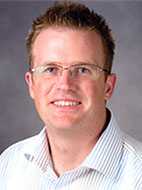21 Mar Bone Density Scans Can Also Assess Abdominal Aortic Calcification and Cardiovascular Risk
MedicalResearch.com Interview with:
Dr. Joshua Lewis, PhD
National Health and Medical Research Council Career Development Fellow, Edith Cowan University, School of Medical and Health Sciences / Centre for Kidney Research
Children’s Hospital Westmead
Honorary Senior Research Fellow, Sydney Medical School, School of Public Health
University of Sydney
MedicalResearch.com: What is the background for this study? What are the main findings?
Response: Bone scans from bone density machines are widely used to predict future fracture risk. These scans can also be used to detect the presence and severity of abdominal aortic calcification (AAC), which is a marker of advanced atherosclerosis.
We examined bone scans of over one thousand Australian women that were taken in the late 1990s using a method developed many years ago by one of the authors Dr. Kiel from the Institute for Aging Research at Hebrew SeniorLife and Harvard Medical School, and validated on scans from bone density machines by the joint first author Dr. Schousboe from the University of Minnesota. More than 2/3rd of these women had detectable AAC and women with more advanced calcification had increased likelihood of long-term cardiovascular hospitalizations and deaths as well as deaths from any cause. These finding remained significant even after adjusting for conventional cardiovascular risk factors.
MedicalResearch.com: What should readers take away from your report?
Response: Our study highlights that widely available bone density machines may also be used to assess cardiovascular disease risk at the time of bone density testing. This makes bone density screening even more useful.
MedicalResearch.com: What recommendations do you have for future research as a result of this work?
Response: We now need to know whether a single assessment of abdominal aortic calcification is adequate to estimate long-term CVD risk or whether longitudinal scans every 2 or 3 years are needed to identify individuals with active or new advanced atherosclerosis that may be more strongly related to future CVD risk. We also need to know whether patient and physician knowledge of abdominal aortic calcification can lead to real change in clinical decisions and patient behaviour.
MedicalResearch.com: Is there anything else you would like to add?
Response: Dr. Wilson who is an author on the paper is an employee of Hologic Inc. and reports personal fees, non-financial support and other from Hologic, Inc., during the conduct of the study; personal fees and other from Hologic, Inc., outside the submitted work; In addition, Dr. Wilson has multiple densitometer imaging and reporting patents which may be relevant, US and worldwide, both pending and issued owned by Hologic, Inc.
Citation:
J Bone Miner Res. 2018 Feb 14. doi: 10.1002/jbmr.3405. [Epub ahead of print]
Lewis JR1,2,3, Schousboe JT4, Lim WH1,5, Wong G2, Wilson KE6, Zhu K1,7, Thompson PL8, Kiel DP9, Prince RL1,7.
[wysija_form id=”3″]
The information on MedicalResearch.com is provided for educational purposes only, and is in no way intended to diagnose, cure, or treat any medical or other condition. Always seek the advice of your physician or other qualified health and ask your doctor any questions you may have regarding a medical condition. In addition to all other limitations and disclaimers in this agreement, service provider and its third party providers disclaim any liability or loss in connection with the content provided on this website.
Last Updated on March 21, 2018 by Marie Benz MD FAAD

